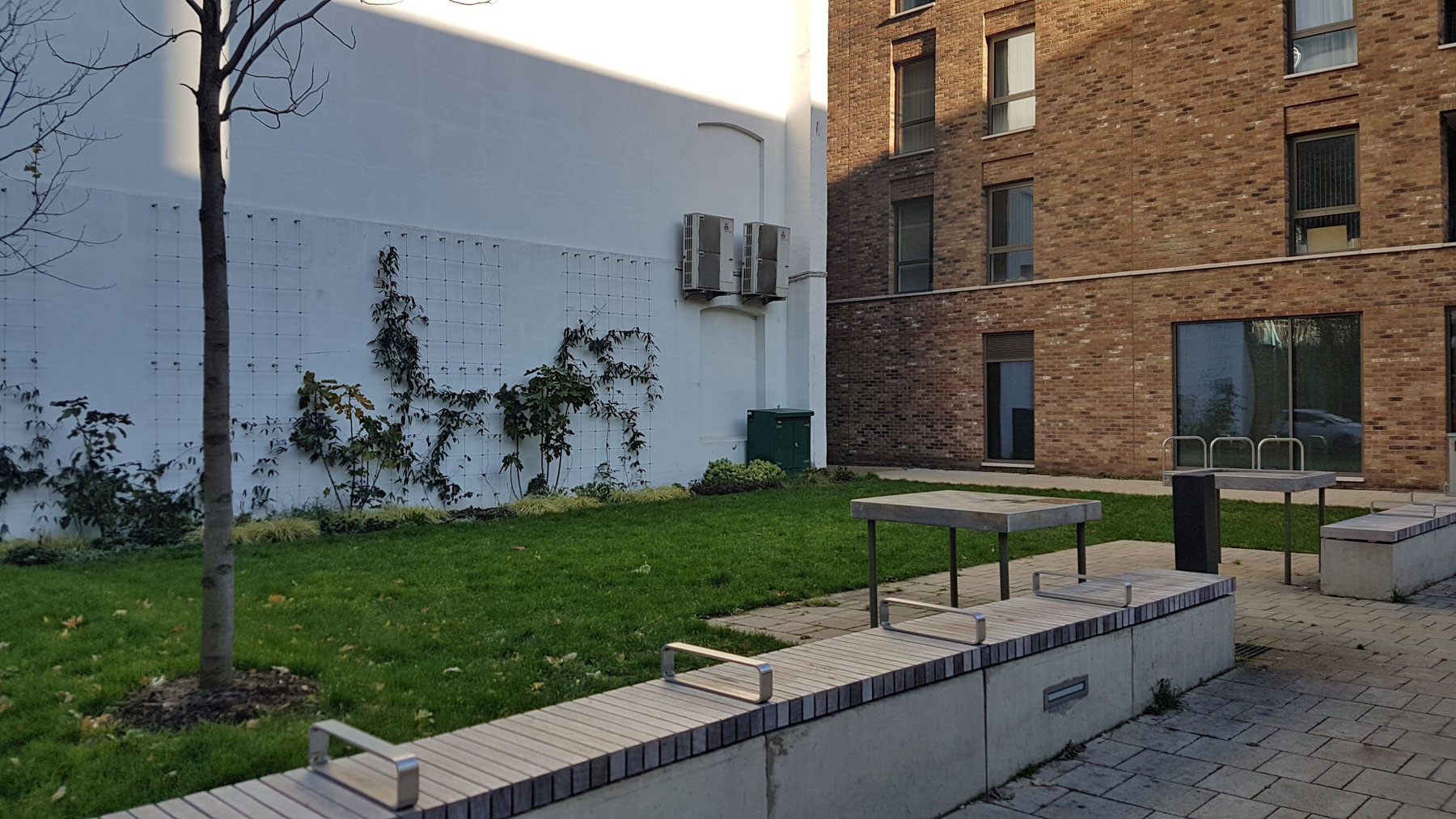This is a newish garden that has emerged from behind fencing following the restoration of the historic Toynbee Hall in Whitechapel.
When Toynbee Hall was built in the 1880s, it stood in a courtyard hidden behind a row of shops, but then WW2 got rid of the shops, and after the war, the ruins were taken down and the space was turned into a garden, but with a high wall and its back to the main road, facing the hall instead. It was a private space.
Initially, I thought this pocket park would have been called Toynbee Hall Gardens, but no, it’s Mallon Gardens, named after Jimmy Mallon C.H., an economist and social reformer who was Warden of Toynbee Hall for over 30 years. A blue plaque is on the Hall behind the garden in memory of his work.
The post-war gardens were sunken, probably aligned with the basements of the demolished shop ruins, and relaid in the 1970s in a style that can be politely described as more paving than planting. A solid brick wall that hid it from the street was replaced with metal railings in 2009, and although now open to the public, it wasn’t obviously so, as the gate facing the street was often closed.
As part of a wider project in the area to build homes to fund the charity works at Toynbee Hall, it was also agreed that the garden would cease to be a barrier to the site, and become a welcoming space instead. Originally intended to be a paved courtyard with some planting, they’ve flipped the design around and laid large lawns instead. The sunken space was filled in and brought up to street level, with a slight barrier bump in the grass in front.
A table tennis table sits in the middle, and new planting is starting to climb up a sidewall. Several trees were retained from the old garden at the rear, but it seems that a large beech tree had to be taken down.
To one side, there’s a steeped area, a legacy of when the garden was sunken and let light into a basement next to it. These planted steps will keep the light flowing into the rooms. Do also look for the old clock, from the demolished church that used to be on this site. It’s a hidden delight you’ll only spy if you go to the back of the garden.
On my visit, this still very new garden already had rubbish dumped on it, maybe a sign of unpleasant people, or a recognition that this new public space is already attracting visitors, which is what it was designed to do.
Probably the biggest change is only noticeable to people who knew what the area looked like in the past — as the grand Toynbee Hall was not easily visible from the main road, but now that the garden has been opened up, it delightful highlights the old building.
A perfect lawn to a country mansion, and to be found in East London.










Thanks for highlighting this new space in the East-end. Under usual circumstance the Hall is open to the pubic and tells the many stories of those people, organisations and issues that have formed Toynbee Hall since 1884.
The overall site recently won a well deserved award from New London Architecture, supported by the Mayor of London
https://nla.london/news/work-live-play-capital-mixed-use-schemes
I remember it as an ‘A’ level student in the late 1960s when the main buildings of the ILEA’s East London College were on the right hand side. The ancillary building was the Davenant Building about half mile a way on the Whitechapel Road.